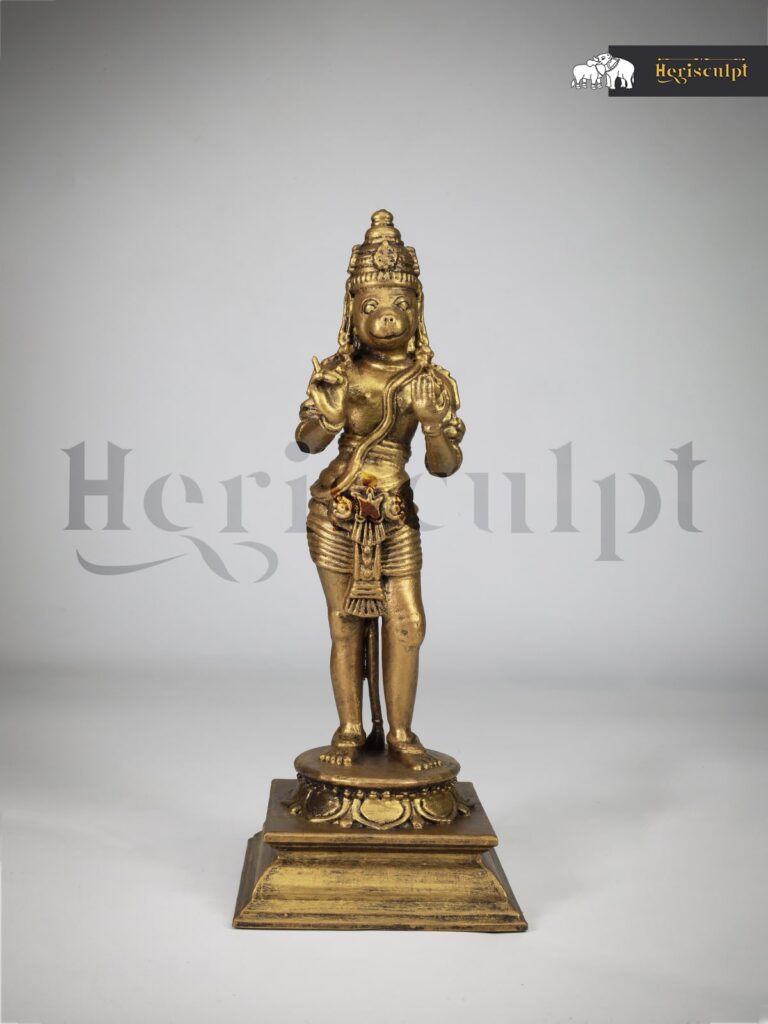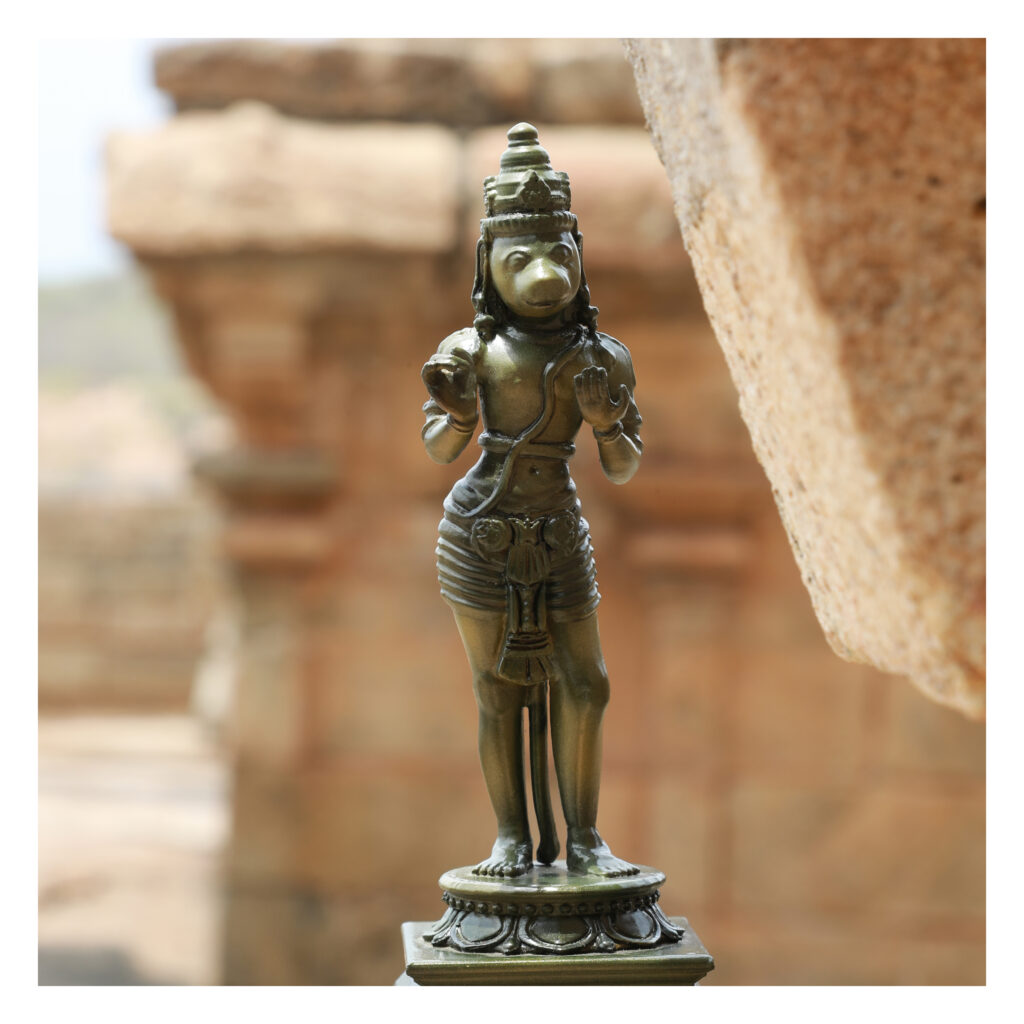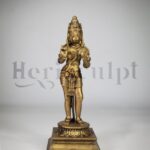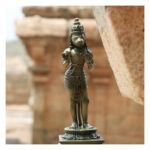The conversing Hanuman: A Reflection of Devotion and Artistry in the 11th Century (Period of chola, 880-1279)
Businesses / Posted 8 months ago by Herisculpt Techvoyager / 68 views
The Chola dynasty, reigning from the 9th to the thirteenth centuries, is renowned for its monumental contributions to South Indian artwork, structure, and subculture. Among the myriad of deities revered at some stage in this golden age, Hanuman held a special area, symbolizing devotion, energy, and loyalty. The eleventh century, a pinnacle of the Chola length, saw the introduction of impressive temples and sculptures, many of which immortalized Hanuman in stone and bronze, reflecting the cultural and religious ethos of the time.
Hanuman in Chola Art and Architecture
The Chola rulers had been high-quality shoppers of artwork and structure, commissioning grand temples that had been not only the most effective places of worship but also cultural hubs. The Brihadeeswarar Temple in Thanjavur, built by Rajaraja Chola I, is a high instance of the architectural grandeur of the length. While frequently dedicated to Lord Shiva, the temple complex and different contemporaneous systems also have characteristic depictions of Hanuman, showcasing the deity’s significance across numerous sects of Hinduism.
Chola artisans have been masters of bronze casting, creating reasonable statues that exuded a sense of divinity and realism. The Nataraja bronze, depicting Shiva as the cosmic dancer, is a famous masterpiece from this period. Similarly, bronze sculptures of Hanuman from the eleventh century replicate complex detailing and expressive craftsmanship. These statues frequently paint Hanuman in his traditional form, with a muscular physique, maintaining a mace, and every so often in a devotional posture with folded fingers.
Visit us to buy this hanuman statue for home
Hanuman’s Symbolism and Worship During the Chola Period
During the Chola period, Hanuman became venerated now not simply for his strength and bravery but also for his unwavering devotion to Lord Rama. This era saw a flourishing of the Bhakti motion, which emphasized private devotion to a deity as a way to nonsecular salvation. Hanuman’s function in the Ramayana, because the committed servant of Rama, resonated deeply with the ideas of Bhakti.
Temples devoted to Hanuman, or people who blanketed shrines to him, were websites of fervent worship. The Cholas, recognized for their administrative prowess, additionally supported these nonsecular institutions, making sure that they had been centers of community existence. Festivals celebrating Hanuman, together with Hanuman Jayanti, could have been marked by elaborate rituals and processions, bringing collectively devotees in acts of collective worship.
Explore our collections in idol, Figurines, Artefacts, Monuments
Appearance of conversing Hanuman:
Hanuman, one of the most revered Hindu deities, is widely known for his bravery, courage, and loyalty as depicted in the Ramayana epic. In this unique artwork, he is shown gesturing obeisance to Rama with his raised left hand whilst undertaking an animated verbal exchange together with his Lord. This piece was originally part of an ensemble providing Rama, Sita, and Lakshmana in its middle and became blanketed amongst a set of processional icons utilized in Vaishnava temples in South India during festivals. Reflecting standard Chola-length artistry, Hanuman is depicted in an anthropomorphic shape, with his face and tail indicating his monkey identity. This depiction is considered one of the finest pictures of Hanuman to have survived the Chola state, shooting his noble and virtuous man or woman with extremely good sensitivity.
Hanuman’s Cultural Influence
The Chola period became a time of full-size literary hobby, with many works composed in Tamil and Sanskrit. The stories of Lord Hanuman from the Ramayana have been retold and elaborated upon in neighborhood diversifications and variations, emphasizing his virtues and heroic deeds. These literary works, combined with temple inscriptions and sculptures, played a crucial function in disseminating Hanuman’s memories and making sure of his place in the cultural reminiscence of the time.
Visit Us for Unique Artefacts
Legacy and Preservation
The legacy of the Chola-length Hanuman is obvious in the enduring recognition and reverence of the deity in South India. The excellent sculptures and temple carvings from the eleventh century remain a favorite for his or her creative and religious significance. These artifacts now not only serve as a testament to the skill of Chola artisans but also as enduring symbols of Hanuman’s importance in Hindu worship.
In current instances, efforts to maintain and study those ancient relics have shed light on the sophisticated strategies employed by Chola craftsmen and the profound religious sentiments that stimulated their creations. Museums and archaeological websites providing Chola bronzes and temple structures entice students and devotees alike, providing a glimpse into the rich cultural tapestry of the eleventh century.
Conversing about Hanuman at some point in the eleventh-century Chola period is to have interaction with a rich lifestyle of artwork, devotion, and cultural synthesis. The Cholas’ reverence for Hanuman, manifested via their outstanding temples and sculptures, underscores the deity’s enormous position in their nonsecular and social life. As we respect the enduring splendor of Chola art, we are reminded of Hanuman’s undying virtues of strength, devotion, and loyalty that preserve to encourage and resonate across the centuries.
- Listing ID: 23274




